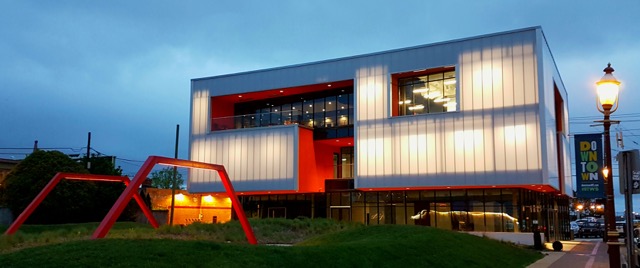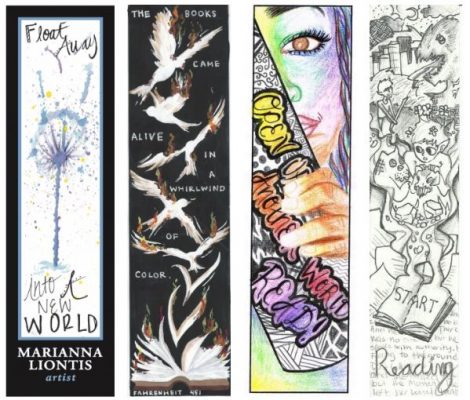By Katy Shick

One of the great delights of watching a foreign film is getting an opportunity to live in another country for just a few hours. While visiting this culture, we, the viewers can witness what life is like—where people live and shop, how they drive, and how they interact with one another. Oftentimes, what we see can be enlightening. In her first feature film, “Mustang”, Turkish born director, Deniz Gamze Erguven, seeks to shed light on the lives of young women growing up in conservative rural Turkey.
The story opens as Lale, the youngest of five sisters, explains, that everything was fine in the sisters’ lives until it suddenly turned to “shit” one day. On the last day of school after they make their tearful goodbyes to their teacher, the girls skip the bus ride home, instead choosing to walk home along the seashore with a few male classmates. When an older neighbor catches sight of the group frolicking in the ocean, she informs the girls’ grandmother, who becomes convinced that the girls have been given too much freedom.
Guided by the girls’ uncle, the grandmother takes away most of the girls’ entertainment, forces them to wear modest clothing, and eventually installs bars on every window (after the girls make an attempt to escape). The girls begin instruction on how to be a good wife as their grandmother makes arrangements to find husbands for the three oldest girls. As each sister is married and leaves home, one to a happy union, one to an indifferent one, and one to a tragic ending, Lale makes a bold plan to escape to Istanbul to reunite with her teacher in order to take charge of her own destiny and give her last remaining sister the same chance.
Primarily “Mustang” seeks to depict the plight of Muslim girls growing up in a traditional, conservative culture. Most of this traditional world is present—the arranged marriages, the separation of men in women in social settings, the dominance of the male figure in the household (despite the presence of his own mother). However, it isn’t just a docudrama. Before they are young girls forced to grow up in their particular situation, they are young girls simply growing up. The sisters are alternately giddy, bored, silly, and angry in their captivity. Much of their imprisonment resembles a slumber party or a lazy summer afternoon in the sun without much to do. They sunbathe, play jokes on one another, plot their escape to a local soccer game, and chew gum when they aren’t watching workers install bars on their windows. They are a mass of long, beautiful, but stringy hair and lie around their prison in their nightgowns and underwear, talking about boys.

At least the older girls are not entirely innocent. The frolicking that sentences them to their cages is charged with sexuality as any “game” played between teenage boys and girls is. Sonay, the oldest, reveals to her sisters one afternoon that in fact she has been having sex with her boyfriend whom she has been sneaking out to see, a fact that would give credence to her grandmother’s fears.
Innocence resides with Lale, the youngest, who narrates their story, and whose perspective the events are chiefly witnessed through. Lale does not always understand the events that surround her, thus most of her narration simply describes what she sees. Through her eyes, the girls’ rebellion seems natural and their behavior doesn’t beg explanation. Her innocence also gives her the best chance at happiness. Uninitiated into the rules of her society, Lale speaks her mind openly when she feels wronged, and she plans her escape without fear of what could happen to a young girl in her society caught in such a disobedient act.
Erguven uses Lale’s innocence to highlight the contradictions of the girls’ world. Lale does not know to call out the contradictions; she merely reports it. It is up to the viewer to see it. Those who love the girls the most, the women of their family, help to imprison them but then protect them from the wrath of their uncle. Sonay, in her defense of her virginity, proudly boasts that she and her boyfriend have only had anal intercourse. The girls’ uncle, who forces them to submit to verification of their virginities so that they can find suitable husbands, also takes at least one sister’s virginity, leaving behind the coveted wedding night bloodstain on their sheets to hide from their sisters and grandmother. The same handgun fired into the air in celebration at the weddings is used for a tragic response to a forced marriage.
“Mustang” quietly reveals these contradictions along with the inherent injustice in this society. No character stands up for the girls and defends them or condemns their oppressors. At the same time, however, it screams this injustice much like Lale’s tirade against the neighbor who informed the grandmother of the girls’ indiscretions. It is a testament to Erguven’s directing and her script, co-authored with Alice Winocour, that it does both of these so well.
A slice of the lives of these girls, Mustang indeed takes its viewers on a two hour tour of rural Turkey and introduces us to five girls living the reality of this world. She shows us that teenage girls around the world share much of the same spirit and voice, and sometimes those girls subjected to injustice use their voices to find a way out of it.

Katy Shick teaches English at North Forsyth High School in Winston-Salem. An avid life long movie fan, she has been reviewing films for family, friends, and the captive audiences of her classroom for decades.
“Mustang” is still playing at a/perture. You can find showtimes and purchase tickets HERE.







